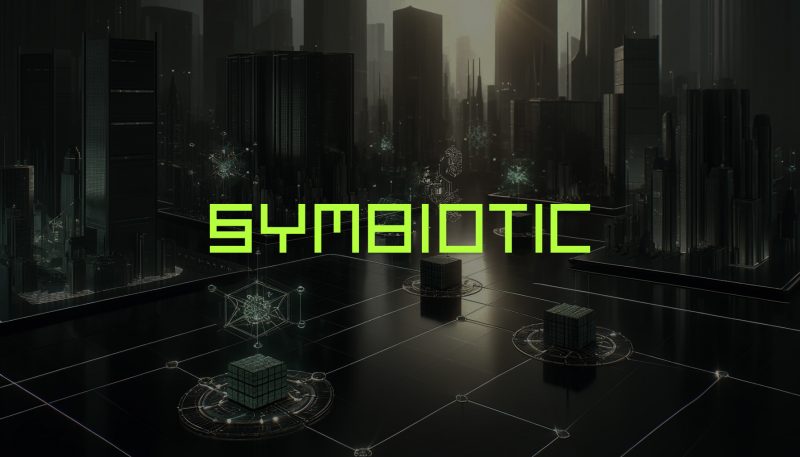Symbiotic launches ‘permissionless restaking’ protocol, secures $5.8M funding
The post Symbiotic launches ‘permissionless restaking’ protocol, secures $5.8M funding appeared on BitcoinEthereumNews.com. Symbiotic, a new restaking protocol, has officially launched and announced a $5.8 million seed funding round led by prominent crypto-native investors Paradigm and cyber.Fund, signaling strong support for Symbiotic’s vision of creating a permissionless and modular framework for networks to customize their restaking implementations. Crypto Briefing previously reported that Lido co-founders Konstantin Lomashuk and Vasiliy Shapovalov, along with venture capital firm Paradigm were secretly funding Symbiotic. The protocol is a direct competitor to EigenLayer, although it has key differences in terms of the security model. Notably, Symbiotic allows the use of a number of ERC-20 tokens and is not limited to ETH and staked Ether derivatives (such as Lido’s stETH). According to its announcement, Symbiotic aims to address the challenges faced by decentralized networks in ensuring adequate security and incentivizing infrastructure operators to adhere to protocol rules. By introducing a neutral coordination layer, Symbiotic enables networks to leverage the security of existing ecosystems, providing a streamlined and safe path to decentralization for projects at various stages of development. One of the standout features of Symbiotic is its highly flexible and modular design, which grants networks unparalleled control over their restaking implementation. Network builders can customize critical aspects such as collateral assets, asset ratios, node operator selection mechanics, rewards, and slashing mechanisms. This adaptability allows participants to opt in and out of shared security arrangements coordinated through Symbiotic, ensuring that each network can tailor its security setup to its unique requirements and goals. Symbiotic’s architecture prioritizes risk minimization through the use of non-upgradeable core contracts deployed on Ethereum. By eliminating external governance risks and single points of failure, the protocol provides a trustless and robust environment for participants. The minimal yet flexible contract design further minimizes execution layer risks, instilling confidence in the platform’s security. Another key advantage of Symbiotic is…

The post Symbiotic launches ‘permissionless restaking’ protocol, secures $5.8M funding appeared on BitcoinEthereumNews.com.
Symbiotic, a new restaking protocol, has officially launched and announced a $5.8 million seed funding round led by prominent crypto-native investors Paradigm and cyber.Fund, signaling strong support for Symbiotic’s vision of creating a permissionless and modular framework for networks to customize their restaking implementations. Crypto Briefing previously reported that Lido co-founders Konstantin Lomashuk and Vasiliy Shapovalov, along with venture capital firm Paradigm were secretly funding Symbiotic. The protocol is a direct competitor to EigenLayer, although it has key differences in terms of the security model. Notably, Symbiotic allows the use of a number of ERC-20 tokens and is not limited to ETH and staked Ether derivatives (such as Lido’s stETH). According to its announcement, Symbiotic aims to address the challenges faced by decentralized networks in ensuring adequate security and incentivizing infrastructure operators to adhere to protocol rules. By introducing a neutral coordination layer, Symbiotic enables networks to leverage the security of existing ecosystems, providing a streamlined and safe path to decentralization for projects at various stages of development. One of the standout features of Symbiotic is its highly flexible and modular design, which grants networks unparalleled control over their restaking implementation. Network builders can customize critical aspects such as collateral assets, asset ratios, node operator selection mechanics, rewards, and slashing mechanisms. This adaptability allows participants to opt in and out of shared security arrangements coordinated through Symbiotic, ensuring that each network can tailor its security setup to its unique requirements and goals. Symbiotic’s architecture prioritizes risk minimization through the use of non-upgradeable core contracts deployed on Ethereum. By eliminating external governance risks and single points of failure, the protocol provides a trustless and robust environment for participants. The minimal yet flexible contract design further minimizes execution layer risks, instilling confidence in the platform’s security. Another key advantage of Symbiotic is…
What's Your Reaction?







![The Marketing Executive's Playbook: How Marketers Can Work & Level-Up Like 700+ Leaders in 2025 [New Data]](https://www.hubspot.com/hubfs/marketing-executive-1-20250106-3440943.webp)


![How to Understand & Calculate Statistical Significance [+ Example]](https://www.hubspot.com/hubfs/how-to-calculate-statistical-significance-1-20250106-7754856.webp)




























.png)












































